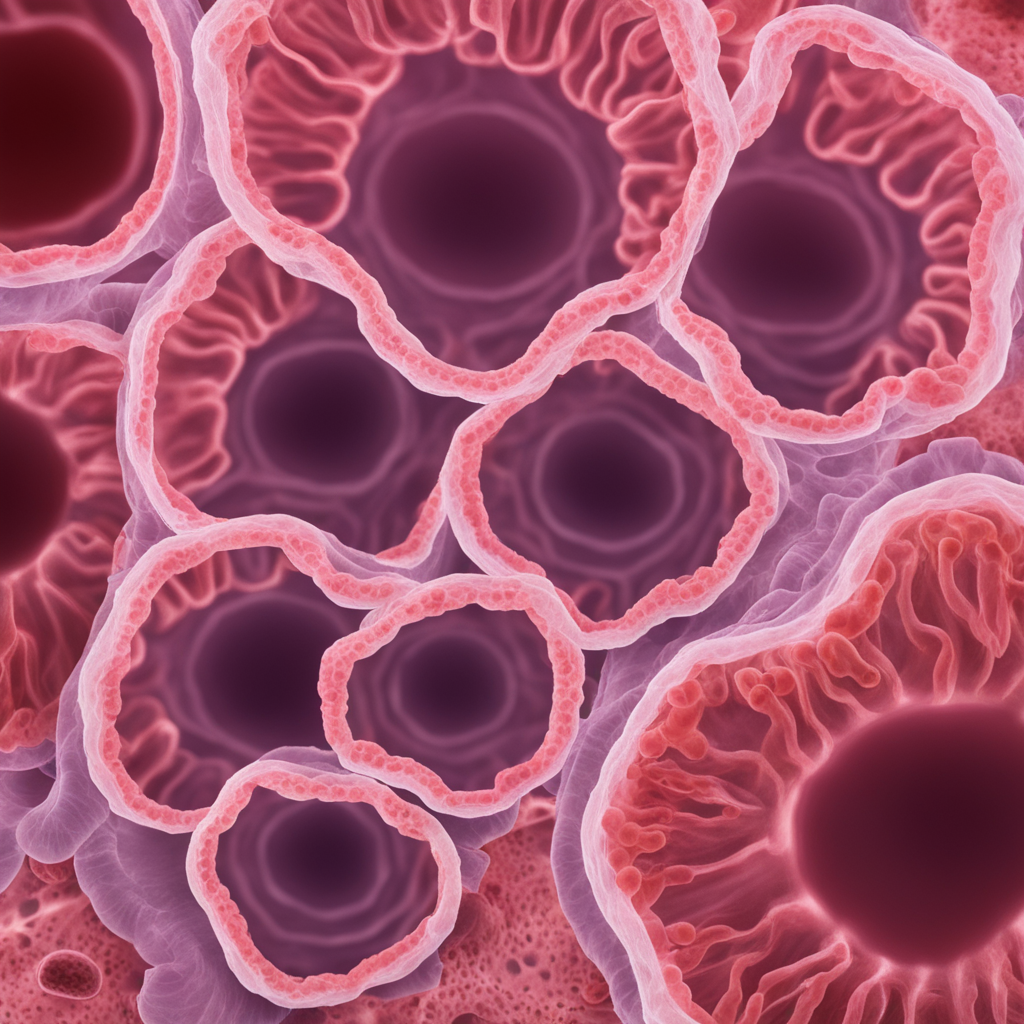Alright, listen up, people! Colonic polyps aren’t your body’s way of telling you to lay off the gummy bears. These little growths are serious business and can lead to something way worse than a sugar crash. If you’ve been dodging that colonoscopy like it’s a door-to-door salesman, it’s time to face the music.
What Are Colonic Polyps?
Colonic polyps are the cellular freeloaders of the digestive tract. Let’s clear the air: these little growths have zero to do with gummy bear consumption or that extra slice of pizza snuck in last night. They’re clusters of cells that decide the colon looks like prime real estate and set up shop.
Most of these cellular settlers are as harmless as a kitten playing with yarn. But ignore them for too long, and some might just turn into the feline equivalent of a tiger—yep, talking about the big C, colon cancer. That’s why these aren’t just a “wait and see” situation; action must be taken.
Not all polyps wear the same stripes. There’s a whole variety show going on: adenomas, serrated types, and even some hyperplastic ones. Each has its own personality and potential for mischief. It’s like a soap opera down there; only the drama could be life-altering.
To sum it up, colonic polyps are not the digestive system’s critique of candy habits. They’re serious, they’re cellular, and they’re waiting for their moment in the spotlight during the next colonoscopy. Don’t disappoint them; roll out the red carpet and let the camera (scope) roll!
Causes of Colonic Polyps
Let’s talk about the “why” behind these cellular party crashers in your colon. No, they’re not caused by nagging ex-wives or that one time you ate expired sushi. It’s more about genes gone wild. Cells in the colon sometimes get a little too enthusiastic and keep dividing when they really should take a break.
Now, there are two main categories of these polyps: nonneoplastic and neoplastic. The non-neoplastic ones are like the guy who shows up at the party, eats all the dip, but leaves without causing a scene. Neoplastic ones, on the other hand, are the ones you’ve got to keep an eye on. They’re the rowdy guests who might just kick over the punch bowl and start a conga line straight to Cancer Town.
The larger the polyp, the greater the risk of it turning into something you don’t want to RSVP to. Size matters, but not in a way that’s going to boost anyone’s ego.
In a nutshell, the causes of colonic polyps are complex and not fully understood, but they’re definitely not the result of bad karma or that cursed tiki idol you picked up at a yard sale. It’s mostly about cellular behavior gone awry, and the best way to deal with it is to catch these little buggers early. So, when the invite for that colonoscopy comes in the mail, don’t send your regrets.
Risk Factors
Let’s get down to the nitty-gritty of who’s more likely to host this cellular soirée in their colon. Age is a biggie; if you’re over 50, you’re in the VIP section of this unfortunate club. But don’t get too excited, it’s not the kind of VIP anyone wants to be.
Smoking and excessive alcohol use? Yeah, they’re like the bouncers that let the wrong people into the party. They up your chances of getting these polyps. So, if you’re puffing and chugging, maybe reconsider some life choices.
Obesity and lack of exercise also get you a front-row seat to the polyp show. It’s like your body’s way of saying, “Hey, let’s add some more drama to the mix!”
Family history plays a role too. If Aunt Gertrude and Uncle Bob had polyps, you might be next in line for the family heirloom nobody wants. It’s not the kind of thing you brag about at reunions, but it’s good to know.
Inflammatory intestinal conditions like Crohn’s disease or ulcerative colitis? They’re like the stage managers in this production, setting the scene for polyps to make their grand entrance.
And let’s not forget race. Black Americans have a higher risk, so awareness is key. It’s not a competition anyone wants to win, but it’s a stat that can’t be ignored.
No, nagging ex-wives aren’t on the list of risk factors, but stress can do a number on your gut. So, maybe send that alimony check on time, just in case.
In the grand scheme of things, these risk factors are your cue to get screened. When that colonoscopy invite arrives, think of it as the hottest ticket in town. It’s a show you don’t want to miss, because the reviews could literally save your life.
Symptoms to Watch For
Alright, let’s dive into the “silent but deadly” world of colonic polyp symptoms. Most of the time, these little guys are like ninjas—stealthy and symptomless. You might not even know you’re hosting this unwanted cellular gathering.
But sometimes, the polyps get a bit dramatic. Constipation or diarrhea that’s hanging around longer than a week? Could be a red flag. But don’t jump to conclusions; it could also be last night’s burrito seeking revenge.
Stool looking like a goth phase with streaks of red or just plain black? That’s another sign. But again, don’t blame the beets just yet. It could be something more sinister.
Feeling like a deflated balloon all the time? Iron deficiency anemia might be the culprit. It’s like your body’s way of saying, “Hey, something’s draining my juice!”
Crampy abdominal pain that makes you double over like you’ve just heard the world’s best joke? A large polyp might be blocking the comedy highway in your colon.
Rectal bleeding is another symptom that should have you speed-dialing your doc. It’s not the kind of red carpet anyone wants to roll out.
And no, cravings for chewing tobacco aren’t generally considered a symptom. But if you’re experiencing any of these other signs, it’s time to RSVP for that colonoscopy. It’s the party no one wants to attend, but the goody bag could save your life.
Diagnostic Methods
Alright, time to get down to the nitty-gritty on how these polyps are discovered. The colonoscopy is the gold standard. It’s like a VIP backstage pass to your colon but less glamorous.
Some folks opt for a sigmoidoscopy. It’s the colonoscopy’s less intrusive cousin. Think of it as only checking the living room and ignoring the rest of the house.
Virtual colonoscopy is another option. No, it’s not a video game, but it does involve some fancy 3D imaging. Just don’t expect any high scores or power-ups.
Stool tests are the introverts of the diagnostic world. They don’t go inside; they just examine what comes out. It’s the least invasive but also the least conclusive. Kinda like judging a movie by its trailer.
DNA stool tests are the new kids on the block. They’re looking for specific DNA markers that scream, “Hey, there might be a polyp party going on in here!”
And for the love of all things holy, don’t let Uncle Philip diagnose you in his garage. He might be good with car engines, but colons are a whole different ball game.
Treatment Approaches
Colonoscopy is the star player in this league. It’s the method that not only identifies those cellular party crashers but also kicks them out. A tiny camera goes on a guided tour of your colon, and if it spots any polyps, out they go.
Sigmoidoscopy is like the lite version of a colonoscopy. It’s less invasive and doesn’t explore the entire colon, but it still gets the job done for the lower part. It’s the choice for those who want to dip their toes in the diagnostic waters without going for a full swim.
Now, for those thinking a shot of whiskey can solve this problem, think again. This is serious stuff that requires medical expertise. So, when it comes to treatment, leave it to the pros.
Prevention Tips
Look, if you’re thinking that chomping down on styrofoam is your ticket to a polyp-free colon, you’re barking up the wrong, uh, intestine. Let’s get real about prevention, shall we?
Eating right is your first line of defense. Fruits, veggies, and whole grains are your colon’s BFFs. Cut down on the fats and maybe your colon will swipe right on you for a change.
Exercise, folks. A sedentary lifestyle is like giving your colon the silent treatment. Get moving, and your colon might just throw you a party, minus the unwanted polyp guests.
Now, let’s talk calcium and vitamin D. Some studies suggest they might be the dynamic duo your colon has been waiting for. But don’t go overboard; consult a healthcare provider for the right dosage.
High risk? Consider genetic counseling. It’s like a crystal ball for your genes, minus the hocus pocus. Regular colonoscopies could be your new norm, but hey, it’s better than the alternative.
And for heaven’s sake, quit smoking and limit the booze. Your colon is not a frat house.
Conclusion
Okay, here’s the deal: If you’ve been binge-watching Golden Girls instead of getting that colonoscopy, it’s time to hit pause on Dorothy and Rose. Those screenings are the real golden ticket to catching colonic polyps before they turn into something scarier. So, make an appointment, and maybe afterward, you can celebrate with a Golden Girls marathon. Your colon will thank you for being a friend.
Recent Posts
The dreaded cold and flu season. It's that magical time of year when your nose becomes a faucet, your throat feels like you've swallowed a cactus, and your body aches like you've been hit by a truck....
Are you feeling a little off lately? Maybe you're constantly thirsty, making more bathroom trips than a toddler on a road trip, or feeling like you could nap for days on end. Well, my friend, it's...

